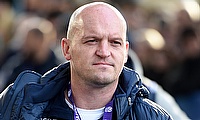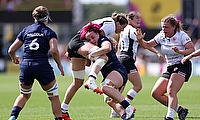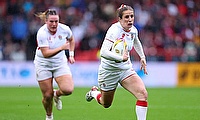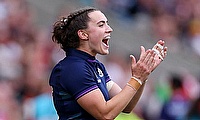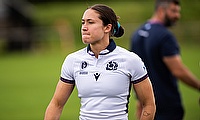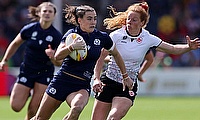Scots Stars: The Rivals
In Scottish sport there is a history of rivalry. The Old Firm bouts between Glasgow's Rangers and Celtic are renowned globally for reasons both ancient and ugly. In shinty clubs Kingussie and Newtonmore enjoy fiery and full-blooded local competition. On the 30th of November Edinburgh University triumphed in the Scottish Varsity rugby match, which is the oldest varsity match in Britain, when they defeated St. Andrews University 39-0.
In the professional game the powers that be have tried to create a similar rivalry out of Edinburgh Rugby versus Glasgow Warriors. Since the number of pro teams in Scotland have been cut down to just these two it was important to make as much out of their games as possible. It was dubbed the 1872 Cup, in reference to the first recorded game between two sides from the east and west, and a whole new storyline was written. There is a shiny wee trophy for the winning players and bragging rights for the fans if their side accrue the most aggregate points over two 'legs'.
In truth these match-ups has developed over the years. As the press and publicists have made more out of the games so have the crowds. Fans take these fixtures incredibly seriously and there are always perceptions of the entitled battering against the disgruntled when East meet West. The matches have an air of discord. Last year there were fisticuffs and cards. This year it would not be surprising to see more of the same.
Perhaps it is also true that there is more edge to these games because of the mixed fortunes of both sides. Glasgow are on a roll, refusing to lose and smashing and grabbing their way to unlovely victories. Edinburgh, on the other hand, retain their 'We-will-score-more-than-you' attitude which has paid off in the Heineken Cup but left them wanting in RaboDirect terms. Both sides are littered with internationals, too. Many believe that these two games during the festive period represent something of a trial series for those looking to make Andy Robinson's Six Nations squad.
Whatever the outcome of these games is it will certainly have come down to which Scottish stand-off played the best.
Before the Six Nations Andy Robinson is going to have to look at the stand-off situation in Scotland and he is going to have to look awfully hard. He may not ignore Dan Parks and his pragmatic style at Cardiff because he is doing what he has always done and what has always seen him selected for Scotland previously. It is not pretty, but it doesn't need to be. However in these two 1872 matches it is possible Robinson may be looking at three potential Six Nations fly-halves.
At Edinburgh club captain Greig Laidlaw, a recognised 9, has stepped back into the 10 berth and played well. In doing so he has replaced promising talent Harry Leonard but he has done it with such authority and verve that few could hold it against him. He is kicking beautifully from the tee. He is bossing about a pack athletes. He is running like a man angry with the game of rugby. He is showing why he should have been taken to the World Cup earlier this year as either a fly-half or a scrum-half.
At Glasgow they have a problem. They have been winning with young Duncan Weir at stand-off and now they have Scotland's stand-off, Ruaridh Jackson, back to full fitness. They must make the tough decision about whether their plan for playing Edinburgh involves kicking for territory and taking pots at goal or if it involves running with a quicker 10 and looking to fling passes wide, early. Weir or Jackson.
Whichever option Glasgow take it will be fascinating. At the moment there are three guys who could play against England and two of them are in superb form. If Scotland were to announce teams tomorrow it would not be disappointing to see either Laidlaw or Weir listed at stand-off. Of course Jackson could throw himself back into popular contention if he runs a nice game when he gets a chance against Edinburgh. Without a doubt all three will get a chance to show themselves in these fixtures.
Which one of these three rivals will put their hand up?

